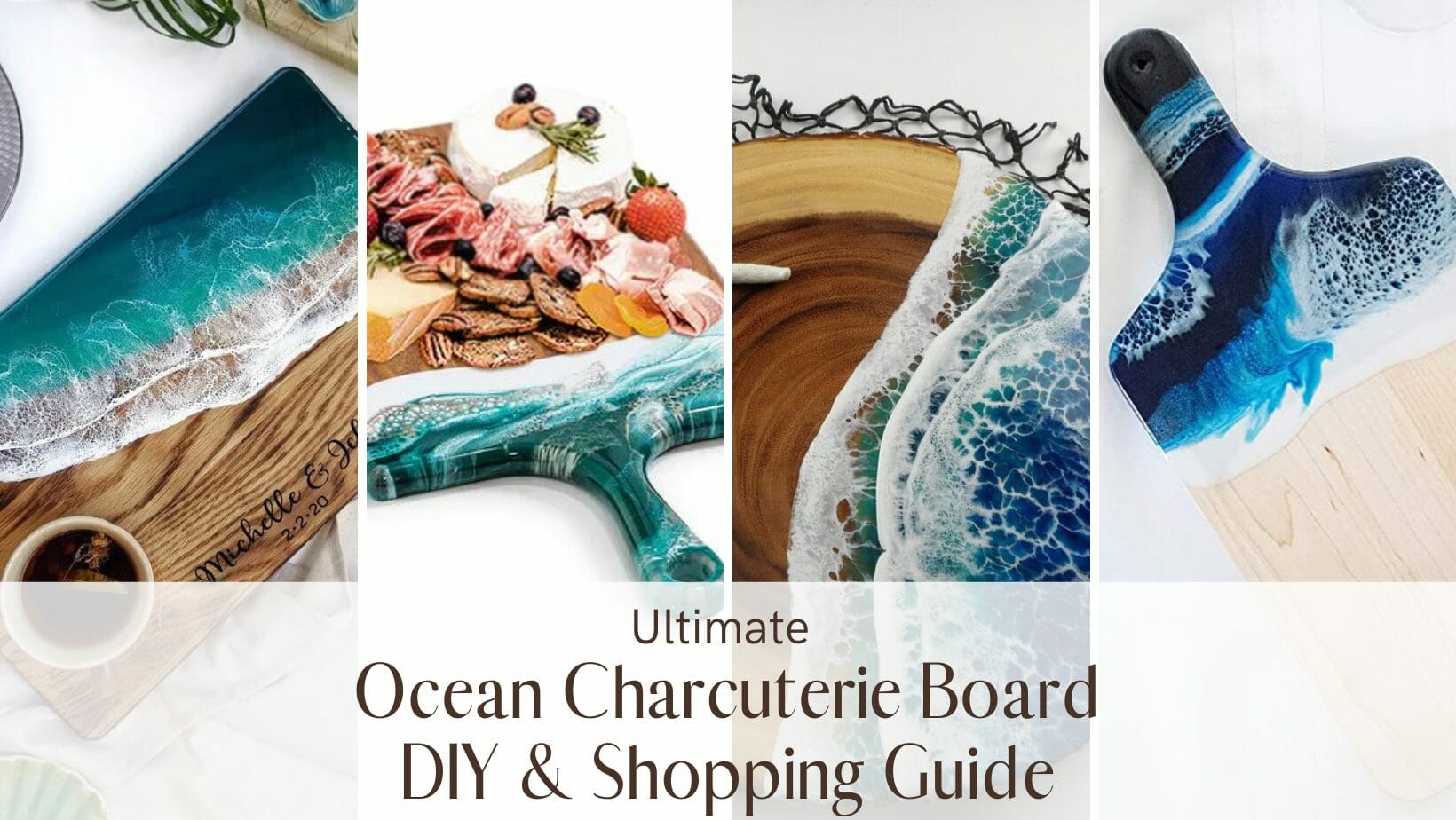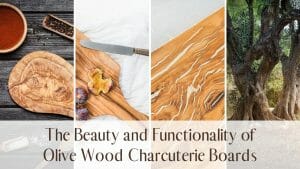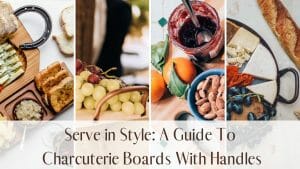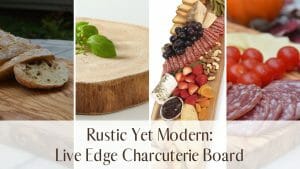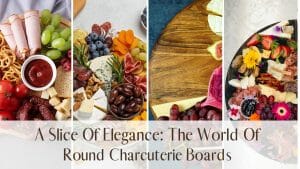If you're a fan of charcuterie boards, you're in for a treat. There's a twist on these classic wood boards that's making waves in the culinary world: ocean charcuterie boards.
These boards are quite diverse. They can be anything from a stunning combination of resin and ocean-inspired materials, such as sand, shells, and sea glass to ocean waves and more.
Whether you're a seasoned entertainer or simply looking for a beautiful way to display your food, ocean charcuterie boards are a stunning addition to any table. So, read on to discover everything you need to know about these beautiful and eco-friendly serving boards.
Become a charcuterie artist with the help of 514K enthusiasts and professionals. Click here for quick, easy lessons and community support >>
Table of Contents [CLICK HERE TO OPEN]
DIY Ocean Charcuterie Board
Making your own board is the best way to get a 100% unique work of art. And it's easy! To start, think about what what you want your board to look like. Sketch out your ideas and make a list of items you'll need. This will give you a rough blue-print to follow as you craft your board.
Here's a list of common materials to help you get started.
- Resin and hardener (amount will depend on the size of your board)
- Ocean-inspired materials, such as sand, shells, and sea glass
- Disposable cups for mixing the resin and hardener
- Stir sticks or a drill with a mixer attachment
- Heat gun or blow torch
- Painter's tape
- Plastic drop cloth or tarp
- Gloves
- Respirator mask
- Measuring cups
Once you've gathered your supplies, follow the easy step-by-step guide below.
- Prepare your work area by laying down a plastic drop cloth or tarp to protect your work surface.
- Arrange your ocean-inspired materials on the surface of your board. You can create a sea foam effect by mixing a small amount of white acrylic paint with your sand or other materials. Spread this mixture along the edges of the board to create the look of waves crashing onto the shore.
- Next, mix your resin and hardener in a disposable cup, following the instructions on the packaging. Be sure to mix thoroughly for at least two minutes.
- Then, once your resin and hardener are mixed, use a stir stick or drill with a mixer attachment to blend in any additional colorants or pigments.
- Pour the resin mixture over the surface of your board, making sure to cover all of your ocean-inspired materials.
- Use a heat gun or blow torch to remove any air bubbles that may have formed in the resin. Move the heat gun or torch over the surface of the board in a sweeping motion, being careful not to hold it in one place for too long.
- Allow the resin to cure for 24 hours, or as directed on the packaging.
- When the resin is fully cured, remove any painter's tape that was used to protect the edges of the board.
- Sand the edges of the board to create a smooth, polished finish.
- Your ocean resin charcuterie board is now ready to use and display!
Note:
It's important to wear gloves and a respirator mask while working with resin and hardener, as they can be toxic if inhaled or come into contact with skin. Be sure to read and follow all safety instructions on the packaging.
The result is a stunning serving board that captures the beauty and essence of the ocean. These boards are not only functional but also serve as a beautiful centerpiece for any gathering. They are perfect for serving a variety of foods, including cheese, meats, fruits, and nuts, and can be used for both casual and formal occasions.
DIY Video Tutorial
Want more guided help? Check out the tutorial below.
Tips When Buying An Ocean Charcuterie Board
When it comes to purchasing an ocean charcuterie board, there are several things to consider to ensure that you get a quality piece that meets your needs and style preferences. Here are some factors to keep in mind:
Size: Consider the size of the board you need. If you plan to use it for serving food, make sure it's large enough to hold your desired amount of food. Additionally, consider the space you have available for storage.
Material quality: Look for a board made with high-quality materials, such as non-toxic resin and natural ocean-inspired materials. Cheaper, lower quality materials can result in a less durable board that may not hold up well over time.
Craftsmanship: Pay attention to the level of craftsmanship and attention to detail put into the board. Look for smooth edges and a polished finish, as well as well-placed ocean-inspired materials.
Style and design: Choose a style and design that fits your personal preferences and home décor. Ocean charcuterie boards come in a variety of colors, shapes, and designs, so find one that speaks to you.
Sustainability: Consider purchasing from a seller that values sustainability and eco-friendliness. Some ocean resin charcuterie board makers use materials sourced from beach cleanups or ocean conservation organizations, which helps support important environmental efforts.
Price: Prices for ocean resin charcuterie boards can vary widely depending on size, materials, and craftsmanship. Consider your budget and find a board that meets your needs while staying within your price range.
Where To Shop
Below are some of our favorite ocean charcuterie board designs. Click on any of the images to get one of your own or start browsing from hundreds of options!
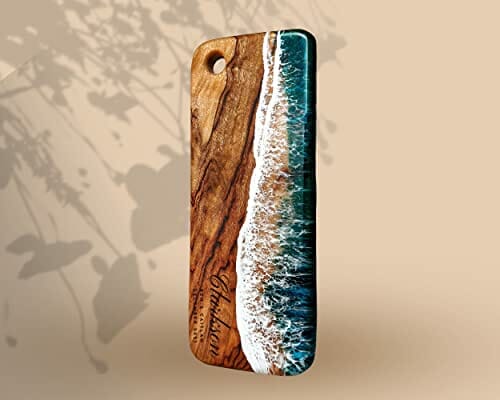 | This Ocean Charcuterie Board is a beautifully crafted cutting board made from high-quality wood. With its intricate details and ample size, it's a stunning centerpiece for your table and makes for special occasions or housewarmings. View More Here >> |
 | This eye-catching charcuterie board is a conversation starter and makes for a thoughtful gift for ocean lovers or anyone who appreciates exquisite and functional kitchenware. View More Here >> |
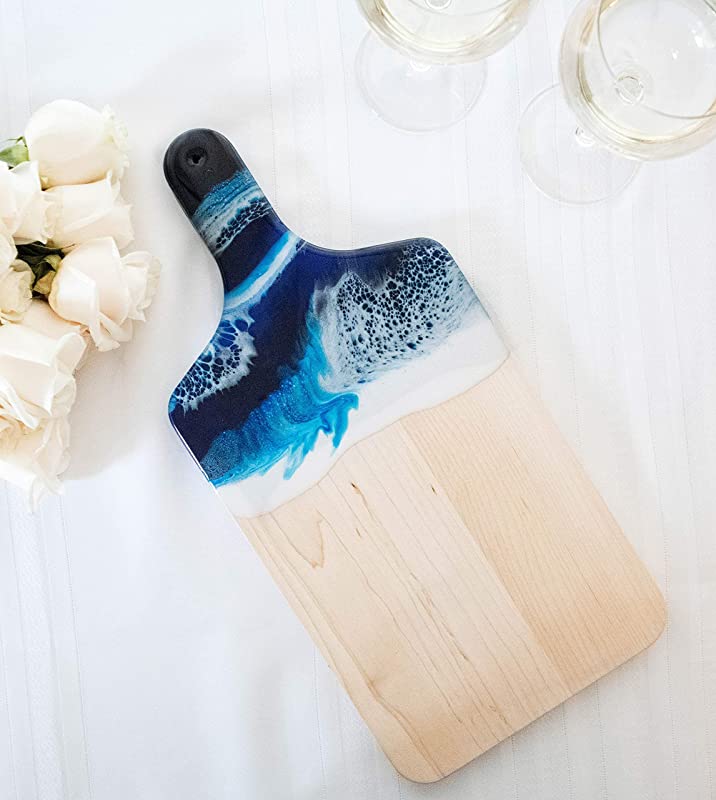 | Crafted from premium wood, this unique board boasts a captivating design inspired by the colors and waves of the ocean. With its vibrant blue and green hues, it's a true statement piece for any occasion. View More Here >> |
 | Introducing the Bamboo Ocean Charcuterie Board, a stunning and eco-friendly choice for your next gathering. Made from premium bamboo, this charcuterie board features a unique ocean-themed design with intricate patterns of waves and sea foam. The natural bamboo color adds warmth and elegance to any table setting. View More Here >> |
Caring For Your Ocean Charcuterie Board
Once you have purchased or made your ocean charcuterie board, it's important to take proper care of it to ensure its longevity and beauty. Here are some tips for maintaining your board:
Cleaning: After each use, clean the board with a soft cloth or sponge and warm, soapy water. Avoid using abrasive materials or harsh chemicals, as they can damage the resin and ocean-inspired materials. Rinse the board thoroughly and dry it with a clean towel.
Avoid heat and direct sunlight: Keep your board away from heat sources, such as stovetops and ovens, as the resin can warp or melt. Additionally, avoid placing the board in direct sunlight for prolonged periods, as UV rays can fade the colors and cause the materials to deteriorate.
Avoid sharp objects: Avoid cutting directly on the board with sharp knives, as this can scratch or damage the resin and materials. Instead, use a cutting board or plate as a barrier.
Oil the board: To keep the board looking its best, oil it occasionally with a food-safe oil, such as mineral oil or beeswax. Apply a thin layer of oil with a soft cloth, and wipe off any excess. This helps protect the board from moisture and keeps the resin and materials looking vibrant.
Store properly: Store the board in a dry, cool place away from direct sunlight when not in use. Avoid stacking heavy items on top of it, as this can cause warping or cracking.
A Pescatarian Delight
You can serve anything you want on your ocean charcuterie board, but a really cool way to use this stunning board is, of course, by pairing it with pescatarian-based ingredients for a healthy, tropical delight sure to impress you guests and your taste buds.
Pescatarian charcuterie is a type of charcuterie that includes seafood as the main protein source, in addition to other plant-based and dairy ingredients. Some simple ingredients to use for a pescatarian charcuterie board could include smoked salmon, grilled shrimp, marinated mussels, fresh oysters, roasted seaweed, various types of cheese, crackers, and sliced vegetables.
Sushi and sashimi are also great options, lending Asian fusion flavors to a pescatarian feast. Arrange these items artfully on your ocean board, and your guests are sure to be impressed by the stunning and unique presentation.
To Sum It All Up
In conclusion, ocean charcuterie boards are a unique and beautiful addition to any home. These boards offer a stunning display of the ocean's beauty, with their use of natural materials and vibrant colors. Whether you purchase a board or make your own, these boards are perfect for serving food or as a decorative piece.
With proper care, an ocean resin charcuterie board can last for years and become a cherished part of your home décor. So why not add a touch of the ocean's magic to your next gathering with a gorgeous ocean charcuterie board?
Frequently Asked Questions
What is the best board to use for charcuterie?
In terms of material, wood is a popular choice for charcuterie boards due to its natural beauty and durability. Hardwoods like maple, cherry, and walnut are great options, as they resist bacteria and can withstand regular use.
How do you make resin look like ocean waves?
Add a small amount of white pigment to create a frothy wave effect. To create texture and movement, use a heat gun or blow dryer to blow air over the resin while it's still wet. This will create the appearance of waves and add a realistic touch to your design.
What materials do you need for ocean resin art?
A surface, epoxy resin with cups and mixing tools, acrylic paint, and a hairdryer. You can also use seashells and sand for embellishing.
Is there a difference between a cutting board and a charcuterie board?
Yes, there is a difference between a cutting board and a charcuterie board. A cutting board is primarily used for food preparation and chopping, and is typically made of durable materials like wood, plastic, or bamboo. Cutting boards are designed to withstand the repeated use of sharp knives and are often easy to sanitize.
On the other hand, a charcuterie board is used for serving food, specifically meats, cheeses, fruits, and other finger foods. Charcuterie boards can be made of a variety of materials, including wood, slate, marble, and resin, and are typically larger and more decorative than a standard cutting board.
Share Your Creations:
We’d love to see the charcuterie boards you create using our guide! Feel free to share your own creations in the comments or on social media, and tag us for a chance to be featured. And if you have any other ideas or tips for creating the perfect charcuterie board, we’d love to hear them.

